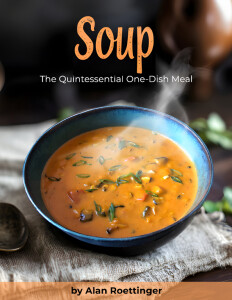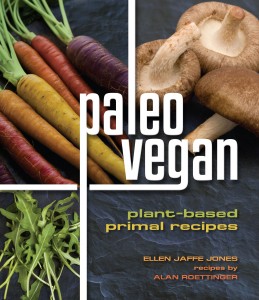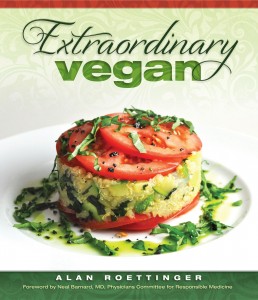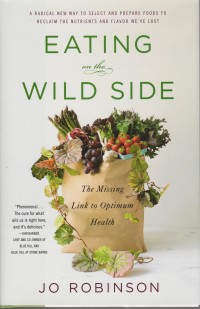Ever since I included a recipe for “Essene Bread” in Omega 3 Cuisine, I’ve been experimenting with it, using various combinations of grains. Now that I’ve decided my next book will be gluten-free, I’ve narrowed the options to exclude wheat, spelt, rye, barley, farro, kamut and triticale.
As I mentioned in the book, “The original recipe for this bread appears in The Essene Gospel of Peace, in which Jesus gives the people of his time some valuable health tips (who knew he could cook?). The method in the good book calls for baking the bread in the sun on a hot rock. For those of us who do not live in the Middle East or Death Valley, a low oven will work just as well.”
Making the “dough” is quite simple: First sprout the grains, then grind them in a food processor to a grainy mush. Form small loaves, about 1 1/2 to 2 inches high, and place them on a lightly oiled baking sheet. Bake the loaves at around 200F for about 2 1/2 to 3 hours.
Now I’ve put a new twist on it. Having ruled out the usual grains, I’ve decided to go in the direction of a nutrient-dense, high protein bread. This is not sandwich bread, after all, so I figure why not just make it a whole food in itself?
Yesterday my sprouted grains were ready. I had used red, white, and black quinoa, buckwheat (all complete proteins), sunflower seeds, sesame seeds, and brown rice. The brown rice, of course, wouldn’t sprout, but I let it go along for the ride so it would be nicely softened up for the grinding process. This worked out very well.
Separately, I also soaked golden flax, almonds, walnuts, and currants. I combined the sprouted mix with the soaked almonds and ground them together. Then I put the dough in a large bowl and mixed in the flax, walnuts and currants, some dry chia seeds, grated carrot, and salt. Once the mixture was well combined, I formed eight loaves. I lined two baking sheets with unbleached parchment paper rubbed with a little coconut oil, and placed four loaves on each one. Then I baked them for about 2 1/2 hours at 200F. When they were cooled slightly, I wrapped them in fresh parchment to keep them from drying out. When they had thoroughly cooled, I added a layer of plastic wrap and and stored them in the refrigerator.
Of course, I did try one loaf immediately. This was far and away the best Essene bread yet. I tried a few slices plain, and then smeared roasted almond butter on a few more. My wife helped. This is a good healthy snacking food, packed as it is with protein, essential fats, vitamins and minerals. I sometimes eat it with a salad, for a quick balanced meal. It also makes a terrific backpacking and general traveling food.
Thank you, Jesus!








Thank you for your efforts here,
I am looking for a bread recipe that is vegan and a whole protein.
I know the difficulties in working the possibilities and yours sounds great.
Maggie
You’re welcome!
My aim was to make the bread not only a whole protein, but also a varied-source whole protein, because each seed and nut brings with it other nutrients–like essential fats,fiber, vitamins and minerals–each with it’s own unique blend and content. Baking it at as low a temperature as the oven will manage helps protect the more fragile nutrients from damage, maximizing the benefits.
Thanks for your comments.
I found your blog through coconut bliss’s blog.I have just read about 5 or 6 of your posts. This recipe I have to try, it sounds so good. I have not sprouted grains yet. How is this done? Is it in your cook book? I am gluten free and always looking for great recipe’s. Thanks for being here.
Hi Juniper,
The basic recipe for “Essene Bread” in Omega 3 Cuisine includes directions for sprouting the seeds. It’s different from fully sprouting, where you want to get an actual green sprout. For bread, you just soak the seeds overnight, drain, rinse, and drain again; then let them begin the sprouting process. The following morning, they’re ready to grind for bread. Sometimes I’ve sprouted them an additional 24 hours, but there was no noticeable difference in the bread.